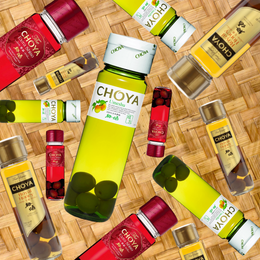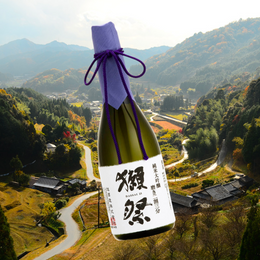French Connection, Phuket Distilled: A Lesson With Chalong Bay Rum's Founder Thibault Spithakis
Note: Many thanks to Jeremy from La Maison du Whisky for this eye-opening masterclass!

Rum as we know it today is said to originate from the Caribbean, and often associated with European colonial styles like British Caribbean rums (Jamaica, Barbados), French Caribbean rhums (Martinique or Guadeloupe) or Spanish Caribbean ron (from Cuba, Puerto Rico and other parts of the Americas).
But the root ingredient of rum – sugarcane – isn't actually native to the Caribbean. Instead, sugarcane originally came from Southeast Asia and India. Around the 8th century, Arabian traders bought the crop from the Siam Kingdom (what is now Thailand) and spread it westward, introducing it to the Mediterranean regions. Then the famous Christopher Columbus introduced sugarcane to the Caribbean during his voyage in the 15th century.

Chalong Bay Rum is made in Phuket Distillery, and started by a young couple, Thibault Spithakis and Marine Lucchini. Thibault and Marine were originally working in financial services in Paris, but dreamed of running a rum distillery on a tropical island. Back in 2004, Marine and her family were holidaying in Phuket when the 2004 Indian Ocean earthquake tsunami disaster struck. Marine and her family emerged unscathed, and since then, she has felt a strong connection to the island and its people.
Considering the backstory of sugarcane's origin, the couple also felt that Thailand was a fitting place to establish their distillery. After all, Phuket is a key part of the sugarcane trade route of the old world. Their hope is to use French distillation practices on Thai ingredients, and thus unite the two heritages and bring rum back to where they believe is the birthplace of sugarcane.
The founders take pride in supporting the community. Sugarcane is only purchased from smaller-scale farmers; those who do not have the wherewithal to work with massive companies in the sugar-making industry. The farmers that they work with harvest sugarcane by hand and use sustainable farming methods, and do not burn plantations after a harvest.

Thanks to La Maison du Whisky Singapore, we recently had the special opportunity to have a sit down with the charming Thibault to learn all about Chalong Bay's story, the geeky technical bits of distillation, and how they've been shaking up Thailand's craft rum scene.
How Chalong Bay 'Rum' is Made

First thing's first. What is supposed to be Chalong Bay 'Rum' isn't actually labelled as such. The bottle label describes it as The Spirit of Phuket distilled from 100% pure sugarcane, yet I noticed no mention of the word 'rum'. It turns out that alcohol labelling laws in Thailand are a little quirky.
According to Thibault, Chalong Bay has been granted a license to distill "white spirits" in Thailand, but their license does not extend to making "rums" as is the case for many other craft Thai distillers. As a result, even though it's as clear as day to rum drinkers that Chalong Bay is producing white rums, at present, the brand isn't permitted to call their spirit a 'rum'.
How is rum produced at Chalong Bay? Their spirit is made from fermenting pure sugar cane juice without any molasses or additives. When it comes to distillation, Chalong Bay uses a copper still imported from the Armagnac region of France, traditionally used for the distillation of Armagnac brandy.

Why an Armagnac still?
Thibault explained that the Armagnac stills used by his distillery are something like a hybrid still, with the features of both column stills and pot stills. This still consists of a small boiler which boils the fermented sugar cane juice and which causes vapour to rise though a short column with several chambers, within which low wines are continually fed into each chamber.
Interestingly, the boiler is heated by direct fire (instead of steam-heating, which is preferred by most modern distillers) fuelled by firewood. Thibault asserts that the use of direct fire makes for a more challenging but fun distillation process. The results may be a little more inconsistent, but the use of direct fire also has the potential to extract a lot more flavour. Apart from Japan's Shizuoka Distillery, this must be one of the few distilleries in the world using wood fire to heat its stills.

The use of French distillation equipment and sugarcane juice raises begs the question: how similar or different is Chalong Bay's rums from traditional rhum agricole made in parts of the French Caribbean?
To this question, Thibault opined that their rum-making methods are by and large similar to rhum agricole makers in places like Martinique and Guadeloupe. So as far as I understand from Thibault, leaving aside nuanced environmental conditions (including yeast strains), different sugarcane varieties and legal definition (such as geographical indications and AOC certification), we're effectively looking at a "Thai rhum agricole."
With these technicalities out of the way, we got down to tasting the rums.
Chalong Bay Rum, 001 Pure Series, 40% ABV – Review
This expression is the quintessential Chalong Bay white rum and represents the unadulterated taste of its distillate. According to the brand, this expression is supposed to be a "veritable ode to one fruit in particular: lychee." Let's give it a taste.

Appearance: Colourless with very slow legs.
Nose: Mellow yet layered with complexity. There's this initial hint of brightness that carries vanilla undertones along with the sweetness and tartness of lychee cream cake. There's also some brown sugar and Jaggery (Indian palm sugar) notes.
While it's mainly pleasant, there's a certain musky and gristly character. As I continue nosing, there are some mineral accents, eventually shifting to more pronounced fruity sugar cane juice notes, akin to apple juice.
Palate: Very viscous but also quite reserved in flavour. With a little patience, it starts revealing a dominance of spices, most notably cardamom and cumin. Underneath, there are softer notes of taro and a gentle whisper of papaya milk. A hint of fresh lychee pops out, but the spices firmly hold their ground. The warmth that follows is robust but it isn't sharp – it's more of a lively spiciness and comforting warmth rather than a sting.
Finish: Moderately short and fairly clean. It leans towards the green and leafy side, with a slightly herbaceous bent. Most of the spices mellow out, but a peppery zing persists till the very end.

My Thoughts:
🍰🌶 A lychee cream cake topped with ma la chili!
This has an incredibly vibrant and complex nose. But the much shyer palate caught me by surprise. I was expecting a bit more sweetness. That said, I did appreciate the pleasing viscous texture and the spiciness. The spiciness really stands out, but not in the "overpowering" sense. How do I explain – it's more of a bold character without any accompanying alcoholic harshness.
It's got pretty unexpected character.
Chalong Bay High Proof Rum, 57% ABV – Review

Appearance: Colourless with very slow legs.
Nose: There's much richer sweetness here, somewhat reminiscent of white cake, but without the overt sweetness. A noticeable peppery presence is complemented by fresh coconut water and a subdued vanilla essence. There's also a hint of minerality in the background.
Palate: Clean and quite viscous. Vanilla from the nose reappears, pairing harmoniously with clean, aromatic and slightly briny coconut water notes. The entire experience is very rounded, with just the right touch of sweetness set in contrast against the persistent pepperiness.
Finish: Fairly long and notably dry, especially towards the back of the mouth. The rather dominant peppery note takes center stage again, accompanied by a melange of other spices like cumin and anise.

My Thoughts:
🪩 🌶 Quite spicy once again, though well-rounded and fuller in flavour.
This one definitely feels fuller in flavor compared to the first. It's got more depth and is assertive in its character. Although it isn't as lively and playful on the nose compared to the first expression, this High Proof variant made up for it in terms of a fuller, more well-rounded taste in the mouth, with rather nice notes of coconut water.
Given the stronger ABV, it's commendable how they managed to maintain a balanced profile. As a cask strength spirits drinker, this is a definite stand out bottling for me in the Chalong Bay range.
Chalong Bay White Spiced Infused Rum, 003 Spiced Series, 40% ABV – Review
Thailand and Southeast Asia are known for their exotic range of spices, which Chalong Bay has access to. This inspired them to create an Asian spiced rum distilled with organic Thai sugarcane and 9 different varieties of Thai and Southeast Asian botanicals such as Thai sweet basil, chili, coffee, vanilla, cinnamon and pandan leaves – all of these ingredients ethically grown and harvested in partnership with local Thai farmers.
At the masterclass, Thibault proudly added that this spiced rum was made possible by custom-made parts to the Armagnac still which was made on Thibault's special request to the still makers in France. This modified still contains several vapour baskets (much like a gin distillation still), and made it possible for him to distill rum whilst infusing it with flavours of the 9 different botanicals.

Appearance: Colourless.
Nose: Very sweet and spiced. Opens with an inviting sweet orange cake note, reminiscent of cozy afternoon high tea. Alongside, there's the warmth of gingerbread, woody spiciness of nutmeg, while the Thai basil brings a hint of herbaceous freshness. There's also a faint trace of lemongrass that gives it a bright, citrusy and herbaceous lift.
Palate: Opens very gently with a softly sweet, softly spicy note of candied ginger, evoking a very familiar memory of Asian sweet treats. Seamlessly followed by rich caramel, vanilla cream and lots of spices for sure, many familiar but I frankly can't identify them all. I get star anise, black pepper, cumin, Thai sweet basil, some perilla leaf and even a bit of tamarind all dancing around and offering a complex, layered experience.
Finish: Long. There's a noticeable dryness that begins with lemon zest and a light bitterness of citrus rinds, and an aromatic hint of pandan leaves. Gradually mellows down, with a lingering licorice mintiness.

My Thoughts:
⏳ A melange of very distinct Southeast Asian flavours - this was a trip down memory lane!
The vibrant flavours scream home through and through, and almost feels as if I'm visiting a provision shop in Little India that sells spices. From the sweet-spicy ginger candy to the pandan in the finish, this is a very lovely ode to Southeast Asian botanicals.
This is probably the best Asian interpretation of a Western spiced rum. It's a really fun expression to taste. If you've got a penchant for Asian-inspired cocktails or drinks, this would just hit the spot for you. This would also make a decent mixer with ginger ale.
Chalong Bay Double Barrel Rum, New French Oak x Ex Armagnac, 47% ABV – Review
This is a rarer expression from Chalong Bay. While the distillery focuses on white unaged rums, this is its first aged expression.
Thibault shared that he was inspired by how Armagnac brandy is aged, and thus decided to use a combination of new French oak as well as ex-Armagnac casks to age his rum. As part of full disclosure, the rum was distilled in Thailand but aged in France for 18 months.

Appearance: Bright gold.
Nose: Clean and gently sweet. There's this bright and inviting candied, caramelly aroma, along with a light scent of papaya milk and honey. There's also some minerality with a light grassy undertone.
Palate: Lots of spices once again, with caramel and honey dominating the palate. Interestingly, the earthiness and herbaceousness in the prior Chalong Bay expressions are lot here, while the sweeter notes of vanilla, honey and caramel and enhanced. There's also a growing pepperiness and spiciness, making it a touch warmer even when compared to the Chalong Bay High Proof.
Finish: Quite long and minty. A hint of fresh sugarcane juice and light floral notes offer some contrast to the spiciness, while the finish overall feels dominated by this cooling peppermint sensation, soon followed by light liquorice note.

My Thoughts
⚖️ A very balanced act.
This is a really balanced act. There are evident signs of rum funkiness and the influence of barrel aging, yet the barrel doesn't overpower the core spirit - in fact I don't taste any dry oak at all.
This would probably appeal to whisky and brandy lovers who find white rums a little too green or 'raw' for their liking. Just like the flagship Chalong Bay rum, it has the same pleasant spiciness that stands out.
Saneha Thai Gin, 40% ABV – Review
After the Chalong Bay rum flight, we were introduced to the Saneha Thai Gin that is also made at Phuket Distillery where Chalong Bay is made. The bottle design looks really fancy, shaped as a hexagonal cylinder, with what looks to be an art deco-inspired bottle art.
The brand name "Saneha" can be translated as "passion", "affection" or "seduction" in the Thai language, and it conveys a sense of intense romantic feelings.
The gin is distilled along with juniper, sugarcane, coriander, Phuket pineapples, ginger flowers, cloves and also makwean, which is a distant cousin of the Sichuan pepper that is often used in Northern Thai cuisines and Thai curries to add spice. All the botanicals, with the exception of Juniper, are sourced locally in Thailand from organic sources.
Thibault added that to add a more tropical feel to the profile, pineapples were used not only in the vapour infusion phase, but also directly fermented to make the base spirit.

Appearance: Colourless, with thick slow legs.
Nose: Clean, sweet and citrusy. Opens with a citrus zing to it alongside a subtle hint of sugarcane juice and a lightly woody aroma from the juniper.
Palate: Really oily and viscous texture felt on the tongue. The first impression on the tongue is dominantly floral with notes of ginger flowers and some hibiscus, along with a very mild but bright citrusy sweetness reminiscent of pineapple juice.
As it develops, it slowly reveals a herbaceous hint of bitterness that reminds me of fresh coriander. There's also a growing spiciness of Sichuan peppers (the makwean, probably) that gradually intensifies and spreads across the tongue.
Finish: The aftertaste really stretches out, holding onto those floral elements, alongside hints of cloves that provide a soft spiced backdrop.

My Thoughts:
🥗 A spicy, colourful Thai salad!
This gin is like a Thai meal, blooming with a bunch of floral intricacies and rounded off with spicy, peppery embrace.
Like the White Spiced Chalong Bay, this too, is very representative of Thai flavours and spices. It also stands out for its tropical character expressed in the distinct pineapple notes on the palate.
Saneha Thai Gin, Luminous, 40% ABV – Review
The Saneha Luminous is a newly introduced variant to the gin portfolio. This is currently not yet available in Asia apart from being stocked at several Thai cocktail bars.
This variant uses a different range of botanicals. Notably, it seems designed to be elevated in its citrus profile: Juniper, makwean, star anise, pomelo, grains of paradise, kaffir lime, cassia cinnamon, coriander seeds.

Appearance: Colourless, with thick slow legs.
Nose: The aroma is very fresh, leafy and very citrusy, strongly reminding me of a citrus grove with a characteristic scent of lime leaves. There's a layer of a light undertone of vanilla and cinnamon, with a light resinous note of juniper remain consistently present in the aroma.
Palate: Opens with a smooth vanilla sweetness, followed by a zesty citrusy wave. This is complimented by a pronounced spicy sensation on the tongue, probably from the makwean or star anise make.
Finish: Long and full of citrusy zest - a blend of pomelo and kaffir lime, with a slight peppery touch. The gentle warmth and mild sweetness reminiscent of cassia and cinnamon lingers quietly.

My Thoughts:
🍋 🌶 Very compelling spice and citrus here.
Like its predecessor, this has a lot of spiciness in it. Yet it also holds its own with a more cinnamony and limey character. The citrusy profile is unmistakably more pronounced, with the kaffir lime and pomelo playing starring roles, which makes the Luminous feel a lot brighter in its flavour profile. That being said, I'd still rate it on par with the previous gin because there's a lot of complexity in it.
With such an intensely citrusy gin, this would probably make a good base spirit in classic citrusy cocktails, such as the Tom Collins or even a Southside. The strong, almost leafy citrus characteristics would shine through in these concoctions.
Overall Thoughts
Now, it was certainly an eye-opening experience trying Chalong Bay's rums. While its production process is said to resemble rhum agricole, it has a distinctive, almost more Asian, flavour profile that sets it apart, and helps it carve out a unique niche in the world of rums.
The standout expressions for me undeniably are the Chalong Bay High Proof and the Chalong Bay White Spiced rum. The High Proof offered much more depths of rich sweetness, intertwined with lovely notes of coconut water, so that makes it my favourite of the Chalong Bay lineup. The White Spiced rum, on the other hand, is a fantastic Asian interpretation of spiced rum and it truly has the capacity to transport me to the aromatic lanes of a spice provision shop in Southeast Asia.
After tasting these 6 expressions, spiciness really emerged as the common thread though the flavour profiles of almost all the spirits from Chalong Bay and Phuket Distillery. But to be clear, his spiciness doesn't translate to a harsh or overbearing experience. Instead, it's a type of spiciness that is lively, warm and enjoyable to many who grew up eating spicy foods in Asia.
The distillery has masterfully embraced and showcased the richness of Asian spices in a way that is both familiar and refreshing.

@CharsiuCharlie





